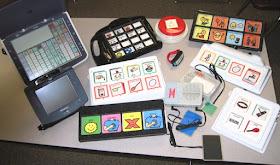Autism Traits in Childhood Linked to Eating Disorders in Adolescence
BY LAURA DATTARO / 4 JUNE 2020
Children with social
difficulties are more likely than those without to develop disordered eating by
age 14, according to a recent study. The researchers analyzed data from a
longitudinal study to understand the relationship between autism and eating
disorders over time.
At least 20 percent
of adults and 3 percent of children with eating disorders also have autism. But
much of what researchers know about link between the two conditions has come
from studies of people seeking treatment for eating disorders, which makes it
difficult to understand whether one condition sets the stage for the other or
something else explains the overlap.
It is possible that
eating disorders can cause traits that look like autism, says lead investigator
Francesca Solmi, senior research fellow at University College London in the
United Kingdom. Research suggests, for example, that the starvation associated
with anorexia nervosa can cause problems with emotional processing.
“From all the
research we had so far, we cannot see really well whether autism comes first
and eating disorders second, or whether people with eating disorders have high
levels of autistic traits because it’s somehow a manifestation of the eating
disorder,” Solmi says.
Mapping Trajectories:
To investigate
whether autism traits precede disordered eating, Solmi and her colleagues
analyzed data from the Avon Longitudinal Study of Parents and Children, which
tracks nearly 14,000 people born in Bristol, England, in 1991 and 1992.
Mothers of individuals
in the cohort filled out a questionnaire about social behaviors associated with
autism, such as persistent interrupting or being unaware of others’ feelings,
when their children were 7, 11, 14 and 16 years old. At age 14, the children
answered questions about their eating habits, such as whether and how often
they fasted, purged, or used diet pills to lose weight. They were also asked
about the frequency of binging behavior.
Of the 5,381
adolescents included in the new study, 421 — nearly 8 percent — engaged in some
type of disordered eating at least monthly. Almost 3 percent, or 148 children,
did so every week. Girls were roughly three times as likely to report such
behaviors as boys were.
The Avon study does
not include data on food habits before age 14, but other work shows that
disordered eating rarely occurs before puberty.
The researchers found that adolescents with disordered eating habits had more autism traits at
ages 7, 11 and 14, suggesting that these traits raise the odds of developing an
eating disorder. The more autism traits a teenager had, the more frequent
her disordered eating behaviors.
Those patterns held
true for both boys and girls, which was surprising, Solmi says. Autism tends to
be underdiagnosed in girls, and eating disorders are underdiagnosed in boys,
making it difficult to study both conditions in people seeking treatment.
The work was
published 3 May in the Journal of Child Psychology and Psychiatry.
Common Biology:
The study could help researchers better
understand early childhood behaviors that lead to eating disorders, says
Susanne Koch, associate professor of clinical medicine at the University of
Copenhagen in Denmark, who was not involved in the research.
“It’s not enough
just to look at persons when they have had an eating disorder,” Koch says. “We
need to look at the development of the eating disorder.”
The emergence of
disordered eating may be related to the social stresses of adolescence, Solmi
says, and that stress can be particularly intense for people with autism
traits.
“If you have
difficulties relating to your peers, this might result in feelings of anxiety
or depression,” Solmi says. “In the case of eating disorders, it could be that
eating then becomes one way in which people cope.”
Other experts say
further work is needed to understand the mechanisms underlying both social
difficulties and eating disorders. It is likely that they share common biology,
rather than one condition causing the other, says Walter Kaye, executive
director of the Eating Disorders Program at the University of California, San
Diego, who was not involved in the work.
“Until we understand
more about mechanisms and neurobiology, it’s going to be hard to come up with
better treatments,” Kaye says.
Regardless, the
study may hold a valuable message for clinicians who work with autistic people
and those who treat eating disorders, says Jennifer Wildes, associate professor
of psychiatry and behavioral neuroscience at the University of Chicago in
Illinois, who was not involved in the research. They can be on the lookout for
eating disorders in autistic people as adolescence approaches and watch for
social difficulties in people struggling with eating disorders, including
typically developing individuals.
“That may inform how
they work with those people in treatment and how they work with their families
as well,” Wildes says.
References:
1.
Solmi
F. et al. J. Child Psychol. Psychiatry Epub ahead of print (2020) PubMed
2.
Oldershaw
A. et al. Eur. Eat. Disord. Rev. 20, 502-509 (2012) PubMed
3.
Hudson
J.I. et al. Biol. Psychiatry 61, 348-358 (2007) PubMed
4. Sonneville K.R. and S.K. Lipson Int. J. Eat. Disord. 51, 518-526 (2018) PubMed













